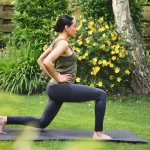
Double Chin Removal: From Causes to Cutting-Edge Treatments
A double chin, scientifically known as submental fat, is a common concern for many individuals. It can affect people of all ages and body types, often causing self-consciousness and a desire for its removal. In this article, we will explore the causes of a double chin and discuss the cutting-edge treatments available for its removal.
Understanding the Causes of a Double Chin
Before we delve into the various treatments for double chin removal, it’s crucial to understand the factors that contribute to its development. Several causes can lead to the accumulation of excess fat and skin under the chin:
- Age. As we age, our skin loses its elasticity, causing it to sag and create a more prominent appearance of a double chin.
- Genetics. Genetics play a significant role in determining an individual’s predisposition to accumulating fat in the chin area.
- Weight Gain. Excess body weight, particularly if it is gained rapidly, can lead to the development of a double chin.
- Poor Posture. Slouching or having poor posture can weaken the muscles in the neck and contribute to the development of a double chin.
- Lifestyle Factors. Smoking and excessive sun exposure can accelerate the aging process, which can impact the appearance of the chin area.
Now that we have a better understanding of the causes, let’s explore the cutting-edge treatments available for double chin removal.
Kybella (Deoxycholic Acid) Injections
Kybella is a non-surgical, FDA-approved treatment for double chin removal. It involves the use of deoxycholic acid. When injected, Kybella works by destroying fat cells. Over time, the body naturally eliminates the dead fat cells, resulting in a more contoured and defined jawline.
Kybella is known for its effectiveness, and most patients require multiple treatments to achieve their desired results. It is a minimally invasive procedure with little to no downtime, making it a popular choice for double chin removal.
CoolSculpting (Cryolipolysis)
CoolSculpting is another non-invasive method for double chin removal. This technique uses cryolipolysis, a process that freezes and destroys fat cells. During the procedure, a specialized applicator is placed on the chin area, delivering controlled cooling to the fat cells beneath the skin. This causes the fat cells to crystallize and die.
The body gradually eliminates the damaged fat cells over several weeks, resulting in a slimmer and more defined chin. CoolSculpting is a convenient option, as it typically requires only one or two treatment sessions. It is suitable for individuals with small to moderate double chins.
Ultherapy
Ultherapy is a non-surgical procedure that uses ultrasound technology to tighten and lift the skin. It is commonly used to address sagging skin on the neck and under the chin. The treatment stimulates the production of collagen in the targeted area, which helps to restore skin elasticity and firmness.
Ultherapy is an FDA-approved technique for double chin removal, and its effects continue to improve over the months following treatment. It is often preferred by individuals seeking a non-invasive option to tighten the skin in the chin and neck area.
Liposuction
While the previous methods are non-surgical, liposuction remains a surgical option for double chin removal. It is especially effective for individuals with a more significant amount of submental fat. During the procedure, a small incision is made, and a thin tube, called a cannula, is used to remove excess fat. Liposuction provides immediate results, and recovery time varies depending on the individual.
Radiofrequency Skin Tightening
Radiofrequency (RF) skin tightening is a non-invasive treatment that uses radiofrequency energy to stimulate collagen production and tighten loose or sagging skin. It is effective for addressing both excess fat and skin laxity in the chin and neck area. RF skin tightening is a gradual process, with improvements becoming more noticeable over time.
Infini Microneedling
Infini microneedling is a minimally invasive procedure that combines radiofrequency energy with microneedles. This technique delivers controlled energy to the deeper layers of the skin, stimulating collagen production and improving skin tightness and texture. Infini microneedling is suitable for individuals seeking a non-surgical method for double chin removal and skin tightening.
Which Double Chin Removal Treatment is Right for You?
The choice of double chin removal treatment depends on several factors, including the severity of the issue, individual goals, and preferences. It is essential to consult with a qualified healthcare provider who can assess your specific concerns and recommend the most suitable treatment.
For individuals with small to moderate double chins and a desire for a non-surgical solution, Kybella, CoolSculpting, Ultherapy, radiofrequency skin tightening, or Infini microneedling may be appropriate options. These treatments are minimally invasive and typically involve minimal to no downtime.
Liposuction is a surgical option suitable for individuals with a more significant amount of submental fat and who desire immediate results. It is essential to discuss the surgical procedure, recovery, and potential risks with a board-certified plastic surgeon.
Conclusion
Double chin removal is achievable through a range of cutting-edge treatments, both surgical and non-surgical. Advances in medical technology have made it possible to address the various causes of a double chin, from excess fat to skin laxity.
The choice of treatment should be made in consultation with a qualified healthcare provider who can assess your individual needs and guide you toward the most appropriate solution. Whether you opt for a non-invasive method like Kybella or CoolSculpting or a surgical approach like liposuction, the goal is the same: achieving a more contoured and defined chin for a rejuvenated appearance.
1 result found for the text you pasted (925 words, $0.11) on 18 Oct 2023 at 12:17 GMT.


















